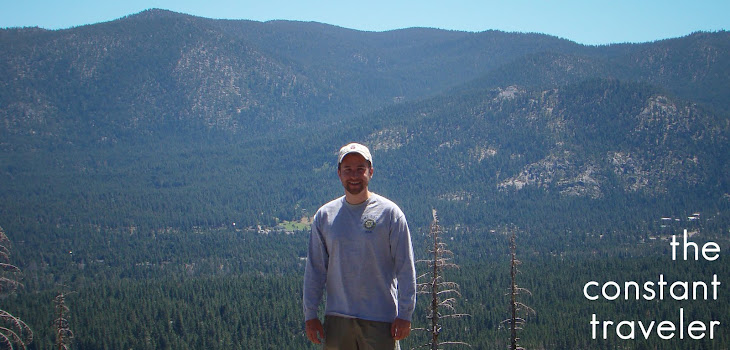Friday morning we woke up early, said goodbye to our host families, and set off southward in a bus. We made our first stop in the city of Kairouan, a cultural capital of not only Tunisia but North Africa and Islam. There we found ourselves standing in awe of the 1300-year old grand mosque of Okba, a looming presence of brick and arches and golden prayer rooms (see first and second pictures below). The mosque, behind those in Mecca, Medina, and Jerusalem, is the fourth holiest mosque in Islam, notwithstanding the fact it was one of the earliest built, since Islam was founded in the early 600s.
Then we were off to the oases of the midlands of Tunisia. As the green lands of the North gave way to Kern County-like badlands, the landscape was dotted every twenty miles or so with green explosions of oases--fairly large areas that had dense vegetation and an ample supply of water. We stayed the night in Tozeur, one of the biggest oases in Tunisia, and enjoyed a round of hookah with our Tunisian teachers while gazing out into the palm-tree covered night. The next day we toured the oasis (see third picture), learning about the highly advanced ecological conservation ongoing in Tozeur and similiar oases. From an American perspective, it was incredibly fascinating to learn that a developing country was so committed to environmental sustainability.
We set off again, the driver ominously warning us that this would be the last oasis for awhile. Within the hour we found ourselves at a shrine on the outpost of the chott el Jerid--a massive salt marsh that stretched white and flat as far as we could see. At the shrine we explored it and the surrounding canyon (see fourth picture) and then we set out onto the solitary, two-lane highway that was the only safe place to cross for 70 miles (see fifth picture and see me walking out onto the salt marsh in my new title photograph at the top of this blog).
That night was the best part of the trip. We arrived at a camel herd, and, fulfilling my Lawrence of Arabia dreams, I rode the camel into the sunset over the dunes of the Sahara (see sixth picture) We rode our camels into a campsite which was a tad ridiculous (air-conditioned tents, modern bathrooms, and a bar?) but far enough in the sand dunes away from civilization that I managed to convince myself of its sense of legitimacy. They cooked us a spectacular dinner, had a troupe of traditional Tunisian singers and a belly dancer perform. That night I and a few others walked into the desert and gazed at a universe so vivid and bright that the dunes around us glowed. We slept in the felt-like sand and awoke to the sun--an experience that I wouldn't dream of ever trying to write about (see seventh picture).
That day, we said goodbye to our Hilton in the dunes and made straight for the Island of Jerba off the western coast of the Sahara. We made a stop in Matmata, where we saw the troglodyte dwellings (houses built in the ground) that were made famous in the first Star Wars film (see eighth picture). At Jerba we collapsed in our hotel and spent the evening relaxing in the Mediterranean. The next day, we made a few tourist stops on the island, all of which seemed overkill to a wiped-out group of students save the beautiful, 2,000-year old Ghriba synagogue (see ninth and tenth picture) which housed one of the first Torah scrolls ever written.
In the interest of hastening us home Monday night so that we could rest up for our Tuesday class, we flew back to Tunis, but not without an hour delay when the airline wasn't letting one of our group onto the plane. Thoroughly wiped, we returned home around 11:00pm.
Less than two hours away will mark the month anniversary of being on Tunisian soil, and, less than a week away, the longest I've ever spent away from home soil. While the last two years of my college career have seen me working as a garbage collector, an editor of a magazine, and a resident advisor, this trip has trumped all of them as the hardest, most challenging experience I've ever been through.
These four days illustrate the core element of this challenge. I may be having the time of my life, but doing what you love isn't relaxing. Thriving means sitting in a crowded bus for three hours over a salt marsh, braving the heat and lack of comfort on a camel trek, and forgoing sleep one night--all just to lay down in the Sahara and gaze up at a universe, in all its glory and vastness, beyond your temporary discomforts and your temporary existence.












David! I am so excited to be following your blog! Your photos are spectacular! Happy and safe travels!
ReplyDelete